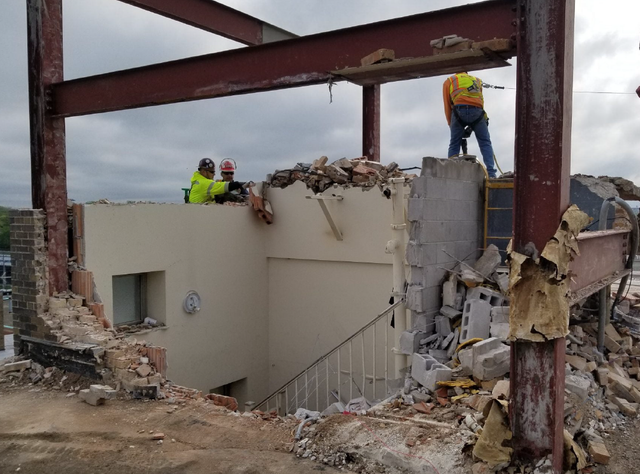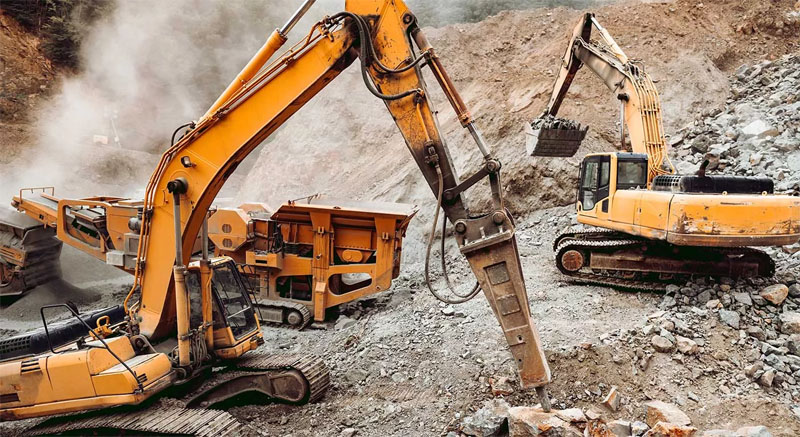Transforming Spaces: Interior Demolition for Residential and Commercial Projects
Transforming Spaces: Interior Demolition for Residential and Commercial Projects
Blog Article
The Ultimate Overview to Interior Demolition Techniques and Tools
Within the world of interior restorations, the art of demolition is an essential stage that needs accuracy, ability, and the right collection of devices. Whether you are a skilled expert or a DIY fanatic, comprehending the complexities of indoor demolition strategies can make all the difference in attaining an effective task end result.
Necessary Interior Demolition Tools
When embarking on interior demolition jobs, having the suitable devices is essential for performance and safety. Among one of the most essential devices for indoor demolition is the demolition hammer. This heavy-duty device is created to appear hard products like drywall, concrete, and floor tile. Its effective hammering activity can quickly knock down walls, floors, and other structures. In addition, a lever is essential for eliminating fixtures, trim, and other materials. Its leverage permits the simple extraction of nails and other fasteners without damaging the surrounding surfaces - interior demolition.
Its ability to make exact cuts in limited rooms makes it excellent for demolition job. Overall, having these important interior demolition tools will dramatically enhance the performance and security of any demolition job.

Security Preventative Measures Throughout Demolition

Furthermore, all workers involved in the demolition process must receive sufficient training on the proper handling of tools and devices to decrease accidents. By adhering to these security preventative measures, indoor demolition tasks can be lugged out effectively while prioritizing the wellness of all people entailed.
Strategies for Removing Walls
Executing correct safety and security precautions during interior demolition jobs is critical for creating a safe and secure workplace, and one essential facet of such projects involves understanding techniques for removing wall surfaces. One commonly utilized technique is hand-operated demolition, which requires the usage of standard hand devices such as sledgehammers, crowbars, and utility blades to very carefully take down the wall piece by item. This strategy enables greater control over the demolition process, particularly in delicate locations where accuracy is essential.
For bigger, extra complicated wall surfaces, mechanical demolition might be essential. This involves using heavy equipment like bulldozers or excavators to tear down walls efficiently. However, it is essential to make sure that the view structural integrity of the building is not jeopardized during mechanical demolition.
An additional method for getting rid of wall surfaces is deconstruction, where the wall surface is disassembled in such a way that maintains recyclable materials. This lasting approach is eco friendly and can likewise help in reducing disposal expenses. Whichever technique is used, it is vital to follow correct security methods and think about the structural effects of wall removal to guarantee a successful indoor demolition project.
Removing Flooring Like a Pro
Effectively removing floor covering during indoor demolition needs the appropriate devices and strategies to ensure a successful and smooth procedure. The initial step in removing flooring is to clear the area of any type of furnishings or challenges. Next off, determine the sort of flooring to figure out the suitable elimination approach. For hardwood or laminate flooring, start by getting rid of the walls and afterwards utilize a flooring scrape to raise and detach the planks. Carpeting elimination includes reducing the carpet right into manageable sections and rolling it up for disposal. For ceramic tile or vinyl floor covering, a chisel or floor scrape can be find out this here used to pry up the ceramic tiles or sheets. It's important to put on protective equipment such as handwear covers, goggles, and a mask to stop injuries and direct exposure to dirt and debris. Furthermore, having a dumpster or assigned disposal location ready for the gotten rid of floor covering materials is critical for maintaining a tidy job setting. By following these methods and making use of the right tools, eliminating floor covering like a pro can be attained successfully and effectively.
Correct Waste Disposal Methods
After effectively getting rid of flooring making use of the suitable devices and strategies, the following vital action in the indoor demolition procedure is implementing appropriate waste disposal methods. Appropriate waste disposal is important for maintaining a risk-free and tidy work atmosphere during and after demolition.

Service providers need to abide by regional regulations concerning waste disposal to avoid penalties and fines. Using expert waste administration solutions can simplify the disposal procedure and make sure compliance with ecological standards. By executing proper garbage disposal techniques, indoor demolition jobs can be completed effectively and sustainably.
Verdict
In conclusion, interior demolition calls for the use of crucial devices and strict safety and security precautions to make certain a effective and safe process. By adhering to these guidelines, interior demolition can be finished efficiently and with very little risks.
One of the most critical tools for indoor demolition is the demolition hammer (interior demolition). In general, having these crucial indoor demolition devices will significantly improve the effectiveness and safety of any type of demolition job
Effectively eliminating floor covering throughout indoor demolition needs the proper tools and techniques to make sure a successful and smooth process.After effectively removing flooring making use of the appropriate devices and strategies, the next critical step in the interior demolition process is implementing appropriate waste disposal methods.In verdict, interior demolition needs the usage of essential tools and strict safety and security precautions to guarantee a effective and secure procedure.
Report this page